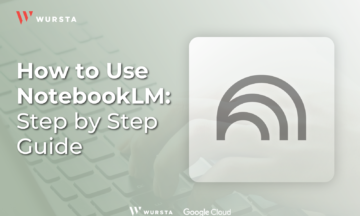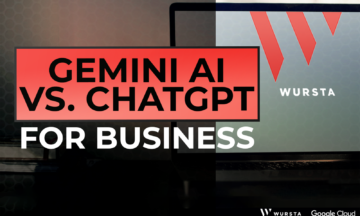Vertex AI’s Expanding Capabilities

While any unchartered territory can have risks, Google is expanding the capabilities of Vertex AI with functionality to help organizations thrive, building on their own unique ideas.
In March 2023, I wrote about how new generative AI capabilities are coming to the Google Cloud AI portfolio. In September, my colleague Ashley wrote a Wrap-Up of Google Next 2023, which included a summary of announcements regarding Duet and Vertex AI. AI tech moves at the pace of, well, an AI-generated story, so today we’re diving further into Vertex AI specifically.
Building Out the Vertex AI Platform
Thomas Kurian, CEO, of Google Cloud, stated, “We are in an entirely new era of cloud, fueled by generative AI.” Google is expanding Vertex AI’s capabilities to:
- Easily experiment and build with foundation models
- Customize them with an enterprise’s own data sets
- Make them simpler to integrate and deploy them into applications with built-in privacy, safety features, and responsible AI
These expansions reflect Google’s customer commitment to providing choices with a diverse and open ecosystem. The number of Vertex AI customer accounts has grown more than 15 times in the last quarter.
Quickly Build Generative Chatbots & Custom Search Engines
Vertex AI Search and Conversation, formerly Enterprise Search on Generative AI App Builder and Conversational AI on Generative AI App Builder, are both generally available to make it fast and easy to build generative chatbots and custom search engines. This will enable developers to build a search engine or chatbot, “grounded in the factuality of their enterprise website along with specified structured and unstructured data sources.”
Additionally, the new multi-turn search in Vertex AI Search supports follow-up questions without starting the interaction over.
Easier to Connect to Data Sources
Vertex AI is being expanded with new extensions to make it easier for developers to connect to data sources. New Vertex AI extensions can retrieve real-time information and act on behalf of users across Google and third-party applications like Datastax, MongoDB, and Redis. Vertex AI data connectors help ingest data from enterprise and third-party applications like Salesforce, Confluence, and JIRA, connecting generative applications to commonly used enterprise systems.
The ability to connect foundation models to your own data sources makes the tool considerably more powerful. As written in a Google blog, “While foundational models are powerful, they are frozen after training, meaning they are not updated as new information becomes available, and thus may deliver stale results. Vertex AI Extensions is a set of fully-managed developer tools for extensions, which connect models to APIs for real-time data and real-world actions.”
The Google Vertex Model Garden Blooms
Excuse me, but I just couldn’t resist a gardening pun. Google announced New models in Model Garden. In a YouTube video, Model Garden is described as, “a single place to discover and interact with Google’s industry-leading models and popular open source models with Google Cloud’s enterprise MLOps tooling support built in. With all of these different enterprise-ready models you could use, Model Garden allows you to choose the right model for your use case, ML expertise, and budget.”
For Model Garden, you can kick off a variety of workflows, including:
- Using a model directly as an API
- Tuning the model in the Generative AI Studio
- Using the model directly in a Jupyter notebook through Vertex AI Workbench
- Help you deploy model training pipelines
Users are also informed what billable components of Google Cloud would be used, along with a link to a pricing calculator to generate a cost estimate based on projected usage.
The Model Garden currently features:
- Over 100 enterprise-ready foundation model APIs
- Open-source models
- Task-specific models
- Both from Google & third parties
Digital Watermarking of AI-Generated Images
Imagen, Google’s model for image generation, features newly added capabilities such as image editing, captioning, and visual Q&A. As part of Google’s efforts to accelerate responsible AI practices, the company is launching digital watermarking on Vertex AI in an experimental phase.
“The experimental availability of digital watermarking on Vertex AI makes Google Cloud the first hyperscale cloud provider to enable the creation of invisible and tamper resistant watermarks in AI-generated images.” This technology, powered by Google DeepMind SynthID, embeds the digital watermark directly into the image of pixels, making it invisible to the human eye, and difficult to tamper with.
Stay Tuned for New AI Workshops
Wursta will soon be launching workshops to help our clients explore the endless possibilities of AI and maximize the use of AI to benefit their organization. Contact us to learn more.


